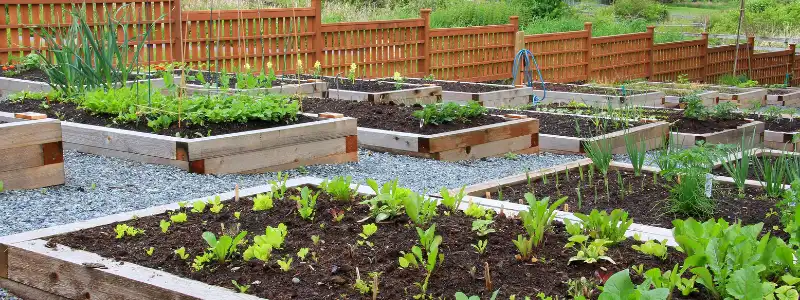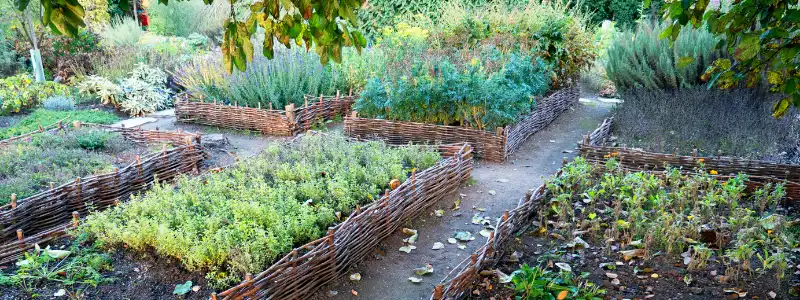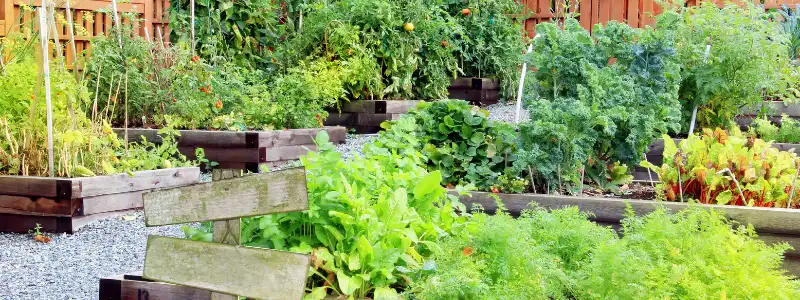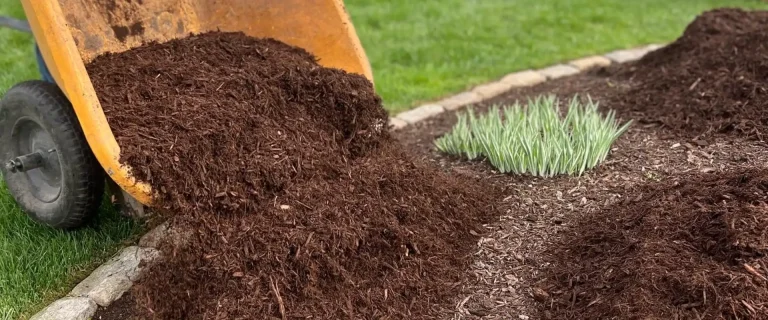Vegetable Garden Installation
More homeowners are considering installing a vegetable garden on their property. Aside from it being a relaxing pastime, vegetable gardens can supply families with the freshest ingredients and add value to your home. There are a dozen different ways to begin the process of cultivating a garden. Without proper planning, though, it’s easy to lose time and money. To begin, it’s important that proper vegetable garden installation is addressed. Experienced Rocky Hill landscaping companies can offer reliable support during planning and installation.
Thinking of creating a unique space on your property to serve as a fresh vegetable garden? Let the professionals at Scenic Landscaping, LLC work with you to create a custom design. We can bring your new garden to life teeming with fresh fruits, vegetables, herbs, and more.

The Benefits of Vegetable Gardens
Garden enthusiasts will tell you there’s no comparison between the taste of a garden fresh tomato and a grocery store bought one. Given the mass production within the food industry, it’s easy to understand how the quality of our produce can be greatly compromised. While a vegetable garden is a huge commitment, there are numerous health and other benefits that should be weighed.
Vegetable garden installation can also be planned to match your lifestyle and needs. Even without a sizable yard, you can still make use of the existing space. An experienced landscape service provider is usually knowledgeable in arranging layouts for various types of garden to ensure optimal use of area available. What are some of the benefits of installing a vegetable garden, though?
Perks of Having a Backyard Vegetable Garden
Nearly a third of all American households have food gardens and that number is growing quickly. Most people are doing it as they want better tasting produce, safer and high quality foods. Other benefits include:
- Gardening for Mental Health – being outside in the fresh air and sunshine is shown to boost mood and increase overall health.
- Saving money on groceries – Cooking with organic vegetables doesn’t have to break the budget. Naturally grown, organic produce from your home’s garden can cut costs at the grocery store.
- Increase home’s value – Consumer Reports survey shows that landscaped gardens can boost a home value by 7%.
According to a 2018 study published by the National Association of Realtors (NAR), a well-maintained landscaped house and various plantings are among the top outdoor features that buyers prize.
Gardening: Where to Start
If a vegetable garden sounds appealing, it’s never a better time to take the first step. As with most processes, it’s important to plan and prepare first and foremost. There are various factors to consider before investing into a home vegetable garden project. For one, it’s important to decide what type of garden makes the most sense economically, area-wise, and for lifestyle needs.
Types of Vegetable Gardens
In general, gardens can come in all different shapes and sizes. They can be made customized to fit even the small spaces such as apartment decks or patios. For larger vegetable gardens, it’s generally recommended to have adequate space so as not to detract from existing landscaping, particularly with hardscape landscaping.

Different Garden Types:
- In-ground Gardens – less expensive option. The water does not drain as quick and the roots stay cooler in the summer. In general, in-ground garden require more space and surrounding hardscapes should compliment the structure of your garden. Speak with a landscaping professional for more information here.
- Raised Bed Gardens – gaining more in popularity. Raised vegetable garden spaces are usually elevated 6 to 8 inches aboveground. They are connected to the ground beneath and may have small fences surrounding them. This helps to keep vegetables safe from pests and ground foot traffic, which can compact the soil.
- Container Gardens – for small spaces, container gardens might be best. Containers are usually pots or smaller boxed soil that can house one or two types of vegetables.
Size of Vegetable Gardens
If you’re considering a vegetable garden installation, it’s important to note size and capacity, plus the best ways to cultivate your crops. Vegetables are typically grown in 1-foot by 1-foot squares within a raised bed. Beds are designed to be no more than 4 feet across so they can be managed from the outside. The gardener never compacts the soil by stepping where the vegetables grow. Gardeners can arrange their square-foot beds in multiple ways to fit the available space. Beds are marked in 1-foot squares using a wood lattice, string, plastic tape, or re-used slats from window blinds. These markings help clearly define planting spaces and make it easy to follow planting density recommendations. Within each square, many vegetables can be grown.
Large plants, such as broccoli or tomatoes, may require multiple squares to allow each plant to grow to full size. Smaller plants (like beets) can be planted up to 16 plants per square, while others (such as carrots) can have 32 per square.
Important Notes on Crops
Possible plant combinations include planting long-season, slow-maturing plants and short-season, quick-maturing ones at the same time. Pepper and radishes, for example. The radishes are harvested before they begin to be crowded by the peppers. Another example of combining growth patterns is planting smaller plants close to larger plants, such as radishes at the base of beans or broccoli. Shade-tolerant species, such as lettuce, spinach, and celery, can be planted in the shadow of taller crops, like beans or squash. Learn more about plant combinations here.
Vegetable Garden Installation
Taking the time to properly set up a home vegetable garden is half the battle and likely the most important step in the process of installation. Putting in the work prior to growing anything can eliminate frustration and disappointment later.
While maintaining a vegetable garden is the fun part, setting it up not so much. Consulting with a Rocky Hill residential landscaping expert can help ensure that logistics are met. For example, hardscape planning and installation should happen first so better assessments of lot size can be made. Typically, gardens should be separated from sidewalks and pathways. It’s important for soil to be drain-friendly and avoid foot traffic as much as possible.

Scenic Landscaping LLC – Rocky Hill Vegetable Garden Installation
Hardscape and general landscaping as a preliminary step really helps give perspective and definition to existing structures and features. This will help you to understand the layout and design for your future vegetable garden installation.
We can hardscape-install steps, pavers, walkways and pathways to ensure proper access to your garden structure. If there aren’t those structures, we’re happy to add them, too!
Regardless of the landscape that you would like, Scenic Landscaping can help. We work with you to understand your objectives with cultivating a vegetable garden and we can bring that structure to life. By working with us, we will help nail down what it is that you are looking for in a vegetable garden installation and the best way for that to happen.
Then, we will develop and set-up the perfect landscape lighting system just for you! Contact us today at (860) 656-7440 for a direct quote.







